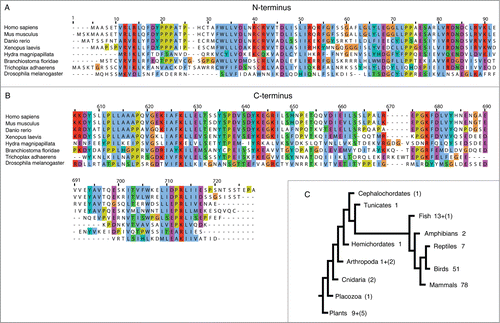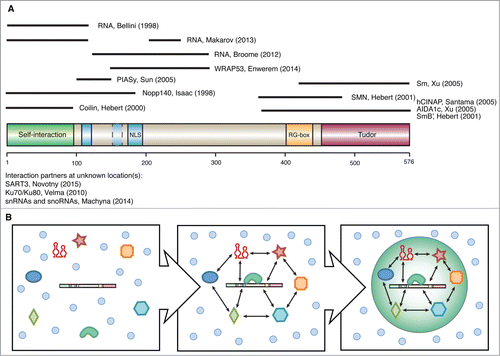Figures & data
Figure 1. Coilin is highly conserved among metazoans. Predicted coilin amino acid sequences (RefSeq) for the indicated species were aligned with coilin proteins identified by homology search in Cephalochordates (Lancelet), Cnidarians (Hydra) and Placozoa (Trichoplax). Alignments of conserved (A) N-terminal and (B) C-terminal regions are shown, demonstrating the greatest divergence of Drosophila melanogaster coilin from the other species. (C) Cladogram shows numbers of annotated and/or predicted coilin proteins per clade together with hypothetical coilin proteins found by homology search (numbers in brackets).

Figure 2. Coilin interaction partners and the formation of CBs. (A) Schematic representation of human coilin protein showing key structural features: Tudor domain (purple), RG-box (orange), bipartite nuclear localization signal (blue), cryptic nucleolar localization signal (light blue) and self-interaction domain (green). Black bars signify parts of coilin known to interact with indicated proteins/RNA.Citation12,14,15,33,37,48,58,84-86,101-104 (B) The current hypothesis of nuclear body assembly suggests that protein and RNA components (colored shapes) tend to have more interactions (double arrows) among themselves as compared to other molecules (blue circles) in the environment. When the components reach a critical concentration locally, liquid phase separation occurs and creates the nuclear body.

